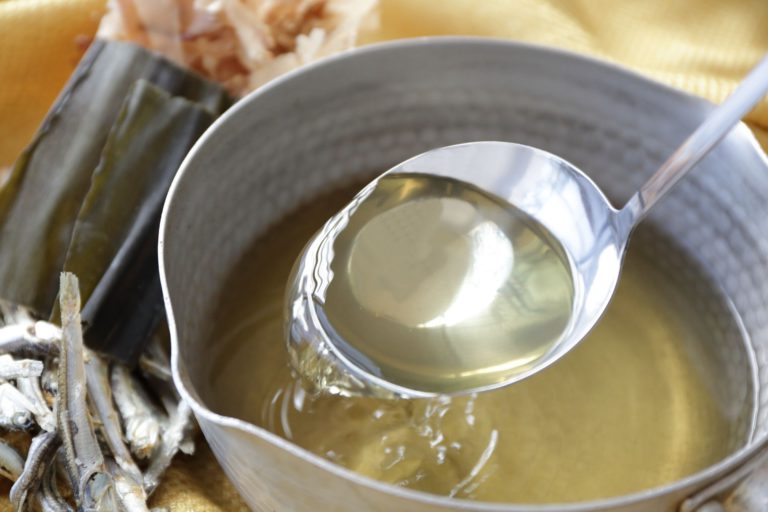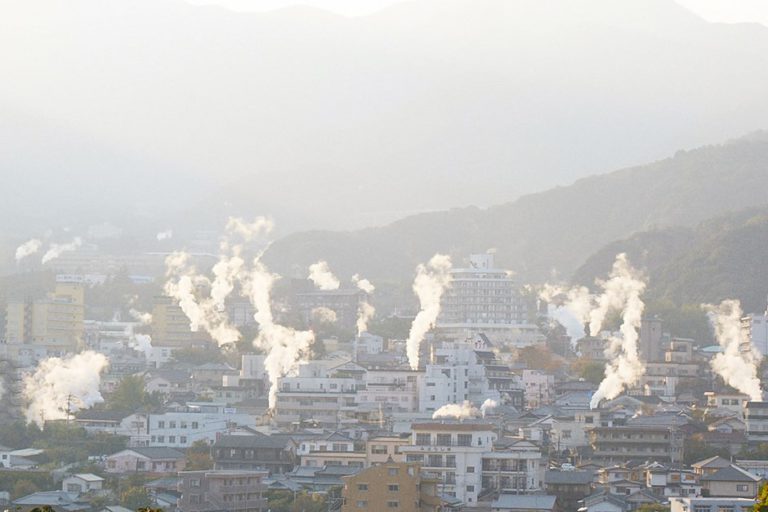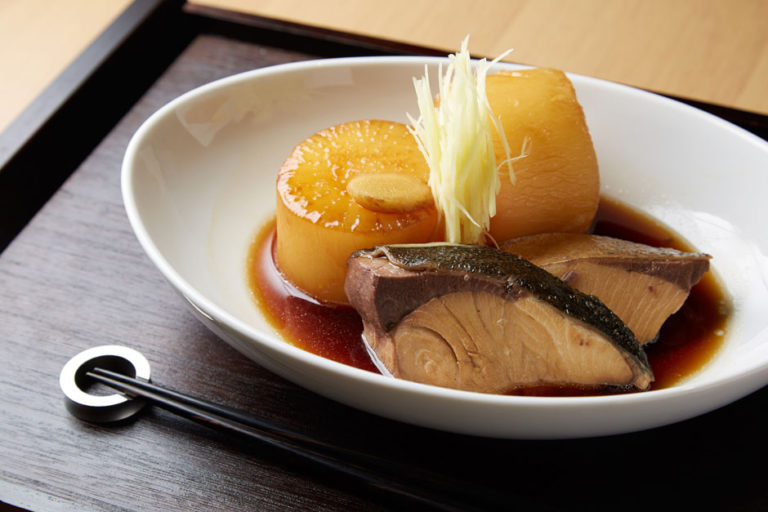Beef Shigureni: A Fusion of Local Food Culture and the Taste of Traditional Japanese Restaurants
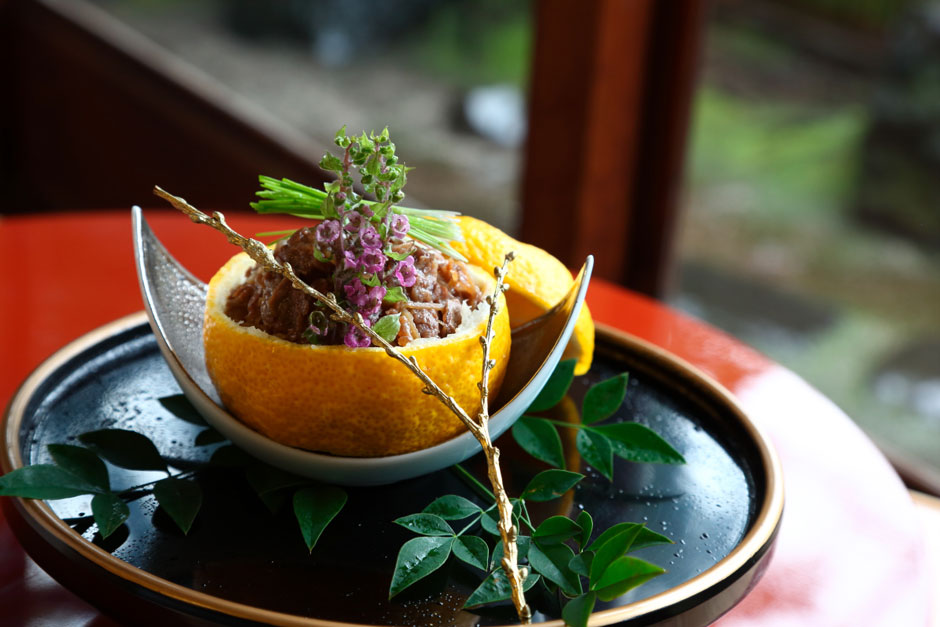
In Mie, you can experience a unique food culture that brings out the best of a diversity of ingredients, including: Kuwana’s hamaguri, also known as the common oriental clam, which is harvested at the estuary of the three Kiso rivers of Kisogawa, Nagaragawa, and Ibigawa; the spiny lobsters and abalone found on the rugged rias coastline of Ise Shima; and Matsusaka beef and Nanki mandarin oranges of the balmy climate of the Chunansei region.
The development of local dishes that were born within Mie’s food culture continues to develop even today.
Cooking delicious beef shigureni using a local traditional method
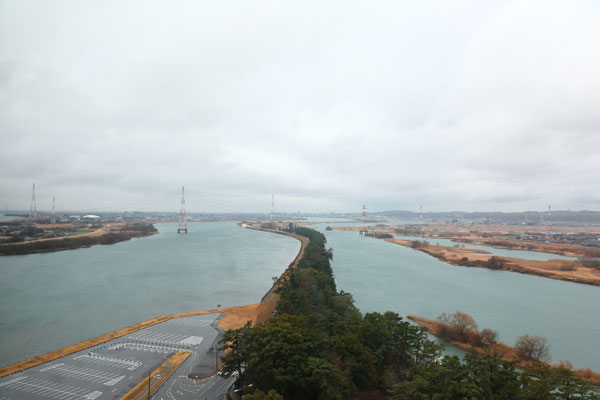
Kuwana city is located in northern Mie prefecture. Here you find the estuary of what is called the three Kiso rivers?Kisogawa, Nagaragawa, and Ibigawa?where fresh water and seawater combine to form a nutrient-rich fishing ground.
Kuwana’s local specialty, hamaguri clams, is harvested here. These clams have a long history, with the clams appearing in the Tokaidochu Hizakurige, a comic novel that was published during Japan’s Edo period (1603-1868). It is also said that they were presented to successive generations of shoguns as a specialty of Mie.
Hamaguri shigureni is famous local cuisine from Kuwana that uses these clams. This soy sauce-based delicacy is prepared by simmering the clams in enough broth for them to float?a process called ukashini. This is Kuwana city’s traditional method of cooking. It brings out the texture of the clams by keeping them plump, as compared to tsukudani where the sauce is boiled off.
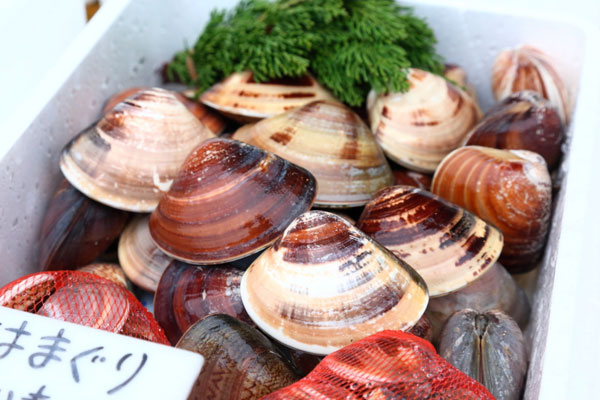
Shigureni cooked with this traditional method is no longer limited to clams.
Other ingredients are also used, and it is now a form of cooking popular throughout Japan. One such adaption is beef shigureni, which is said to have been born as a meal provided to staff at a sukiyaki restaurant in Kuwana. In pursuit of its roots, we visited Kakiyasu Ryotei Honten, the main restaurant of Kakiyasu, which was established in 1871 in Kuwana.
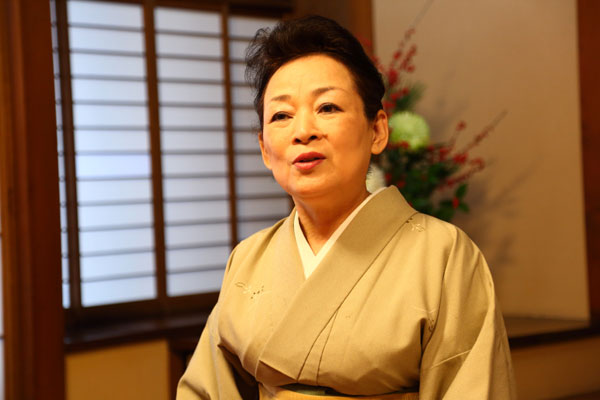
“Beef shigureni was conceived by Ms. Hide Akatsuka, who is the wife of Kakiyasu’s third president. Looking for a tasty way to cook the small pieces of beef left over in the restaurant, she simmered the beef in the restaurant’s secret broth using the traditional ukashini method of cooking,”
explains Ms. Junko Tanaka, manager of Kakiyasu Ryotei Honten.
As the restaurant’s customers found out about this delicious food for the staff, beef shigureni was eventually placed on the menu. Following this, it became a popular gift that rapidly spread throughout Japan.
The reason for its popularity is the flavor achieved through ukashini, and the strict attention the restaurant pays to the ingredients used and the cooking methods used that have been nurtured over its long history as a “beef professional.”
From the ingredients to preparation?painstaking management by beef professionals
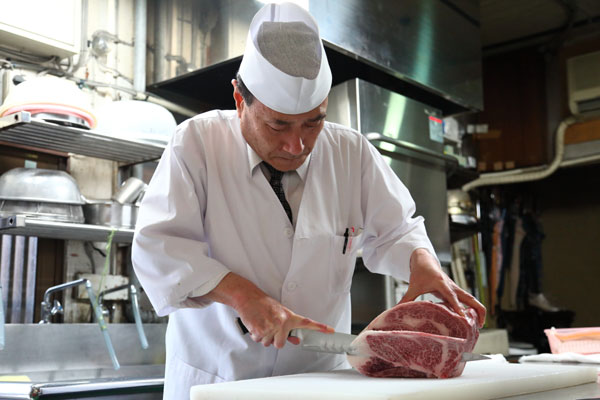
The simplicity of beef shigureni is what makes the quality of the ingredients so very important. Beef, which could be said to be the “life” of Kakiyasu, is firmly selected by experts during the cattle fattening phase, and everything from meat processing to shipment is conducted at the company’s own plant. We spoke to Mr. Taniguchi, the manager of the Kakiyasu Meat Center, about what things he particularly takes care about regarding beef.
“Our company works together with livestock producers to raise the cattle, which is how we maintain the quality of our beef. We have very strict criteria determined by experts with over 40 years of experience. These criteria cover not just the grade of the beef, but other aspects such as the quality of the meat and fat, as well as color, luster, and firmness. Only those livestock producers that have a cattle-raising environment to fulfill these standards become our designated ranches. Beef used in beef shigureni comes from those ranches, of course, and based on our own specifications, such as the balance of meat and fat, we use a quality of beef that is tasty when simmered.”
This painstaking attention to detail is also found at the manufacturing site. At the Shigure Center, the plant in Kuwana city that is dedicated to preparing beef shigureni, we were able to see the staff meticulously cooking this by hand.
“Nothing is more important to beef shigureni than its texture. It will lose its flavor if it’s either too lumpy or too fine. We simmer the beef while observing the condition of the meat, which is why this can only be done by hand,” explains Mr. Kenji Tawara, who is in charge of cooking.
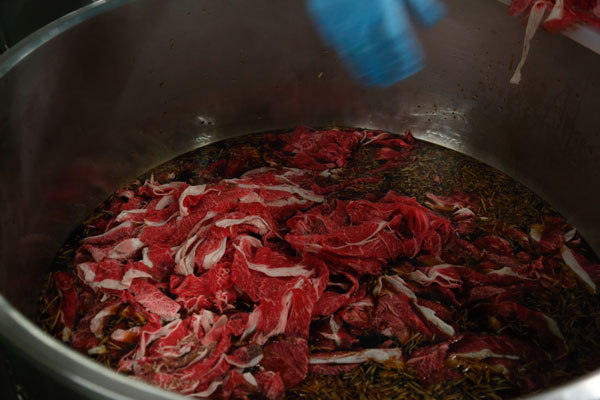
The beef used in beef shigureni is marbled beef that is delicious enough to be used in sukiyaki.
In order to bring out the flavor of the ingredients, shigureni is prepared with loving care using a specially ordered steamer pot, which can heat the ingredients more slowly than is the case with direct heat.
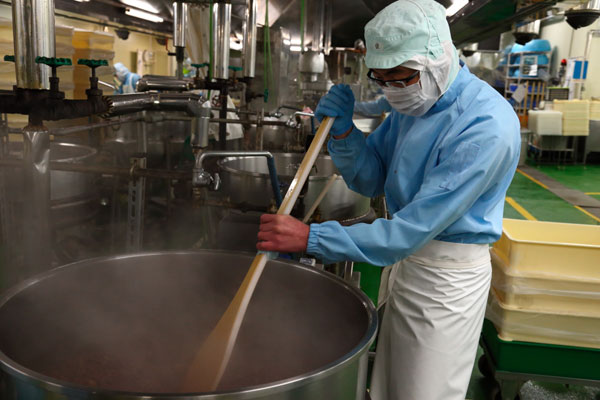
After cooking the beef for about 15 to 20 minutes in Kakiyasu’s original blend of sake, water, soy sauce and other seasoning ingredients, a large wooden ladle is used to gently stir the mixture in a way that keeps the meat from crumbling. Using the sensation of the beef against the ladle as a guide, slight adjustments are made to the flame, and finally, after skimming off the surplus fat, the beef shigureni is completed. According to Mr. Tawara, it takes at least a year or so for a worker to gain the skill and intuition needed to achieve this perfect texture.
Traditional Beef Dishes in Ginza

If you’re in Tokyo and want to try out some beef dishes that showcase the craftsmanship and expertise cultivated by Kakiyasu, go to the Kakiyasu restaurant located in Ginza, the renowned tourist area.
The restaurant is highly popular at both lunch and dinner with customers enjoying beef shigureni and other dishes such as sukiyaki and shabu-shabu, prepared using Matsusaka beef and the company’s own brand Kakiyasu beef, amid a tranquil Japanese atmosphere.
The beef shigureni served at this restaurant is a luxurious dish prepared with Matsusaka beef. The chefs prepare it carefully using Kakiyasu’s sukiyaki stock, a secret recipe that has been passed down for over 140 years. Because the beef is simmered with seasonal ingredients, such as bamboo shoots in the spring, customers can enjoy the seasonal taste that traditional Japanese restaurants are proud to provide.
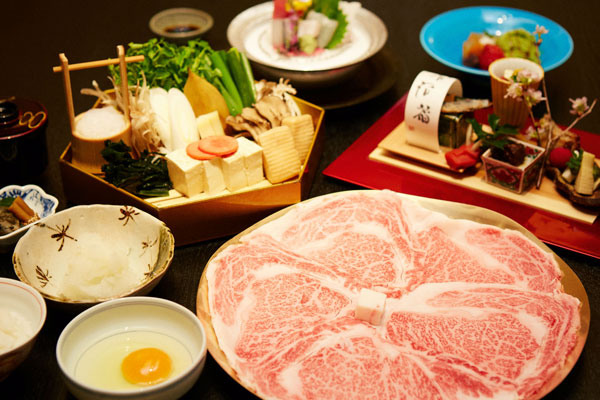
The many dishes on the menu make it hard to choose, but the most popular is the dinner menu’s “Sukiyaki Course (Matsusaka sirloin).” The course starts with appetizers made of seasonal ingredients, followed by sashimi. The waitress then prepares the sukiyaki with large slices of Matsusaka beef.
When we asked Mr. Koji Muraishi, the head chef, about the best way to eat sukiyaki, his answer was, “My recommendation is to first eat only the beef and fully enjoy its taste. Following that, when the vegetables are cooked, eat the meat mixed with grated daikon radish.”
Why not come to Ginza to experience the genuine taste of Kakiyasu, an establishment that is a perfectionist when it comes to beef?
Beef shigure?the fusion of a local traditional method of cooking and the taste of traditional Japanese restaurants.
Local food culture will continue to develop through the zeal of local chefs pursuing flavor and knowhow about food ingredients and cooking methods.

